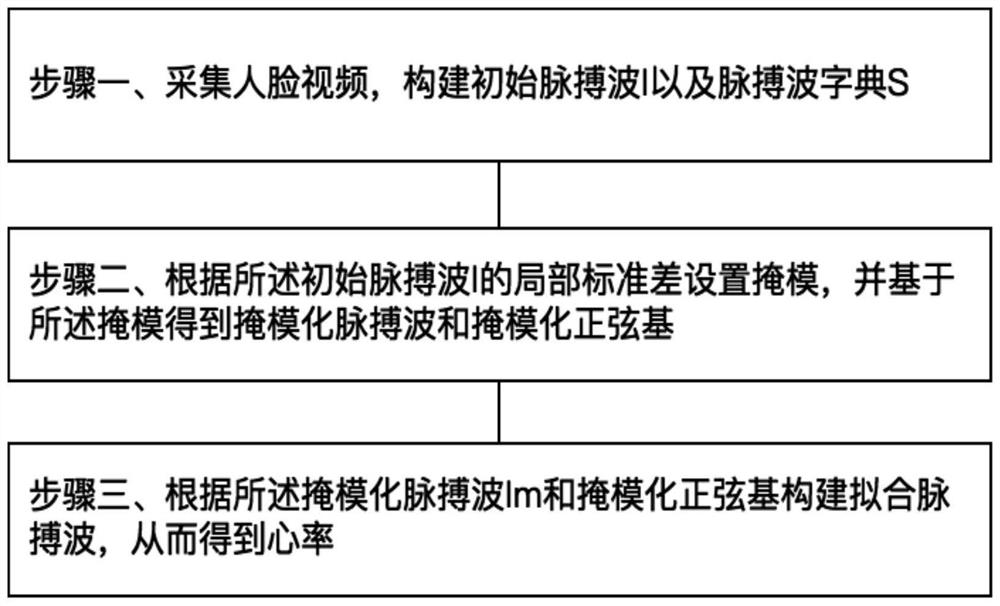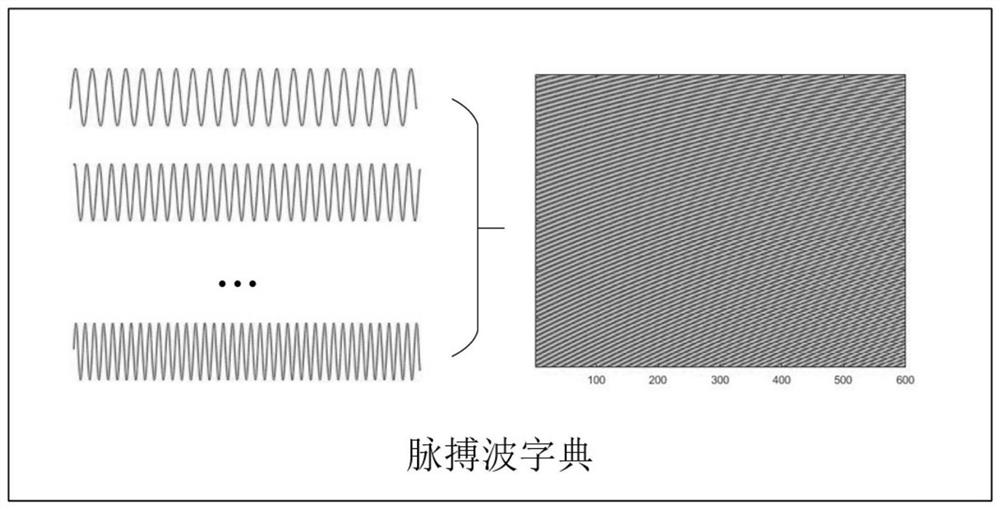A non-contact heart rate detection method based on signal fitting
A non-contact, detection method technology, applied in the field of biological image information processing, can solve the problem that the complete distortion of the pulse wave cannot be effectively solved, and achieve the effect of high fidelity and pertinence, high robustness and stability
- Summary
- Abstract
- Description
- Claims
- Application Information
AI Technical Summary
Problems solved by technology
Method used
Image
Examples
Embodiment 1
[0038] combine figure 1 , a kind of non-contact heart rate detection method based on signal fitting of the present invention, comprises the steps:
[0039] Step 1, collect face video, construct initial pulse wave I and pulse wave dictionary S;
[0040] In this step, the face video is collected by the video acquisition device, and the video image of N frames is obtained, and the face detector Viola-Jones of OPENCV is used to identify the face area in the video image, and the fitting method of the discriminant response graph ( DRMF) detects the feature points of the human face, and the general feature points are 66, track the motion track of the feature points by the Kanede-Lucas-Tomasi (KLT) algorithm, and calculate the pixels of the green channel of the human face area in each frame of video image Average value, get facial pulse wave I,
[0041] I=[i 1 ,i 2 ,...,i N ],
[0042] Among them, i N Indicates the pixel mean value of the Nth frame image.
[0043] In this step...
Embodiment 2
[0060] combine Figure 2-Figure 7 , a non-contact heart rate detection method based on signal fitting of the present invention,
[0061] 1. Take a 20-second video with an ordinary network camera and get 600 frames of video images. The camera model is Logitech HD 1080P, the frame rate is 30fps, and the resolution is 648*480. When shooting, the camera lens and the face are on the same horizontal line, and the distance between the two is about 50 cm. During the shooting, the tester was in a state of natural relaxation (that is, he could do facial movements, turn his head, change expressions, etc.). The shooting environment is an indoor fluorescent lighting environment.
[0062] 2. While shooting the video, use the three-lead / single-channel Heal Force ECG to detect the synchronous ECG as the real value. The lead mode used by the electrode pads of the electrocardiograph is the chest lead. The data collected by the electrocardiograph were processed by the ECGDM workstation.
...
PUM
 Login to View More
Login to View More Abstract
Description
Claims
Application Information
 Login to View More
Login to View More - R&D
- Intellectual Property
- Life Sciences
- Materials
- Tech Scout
- Unparalleled Data Quality
- Higher Quality Content
- 60% Fewer Hallucinations
Browse by: Latest US Patents, China's latest patents, Technical Efficacy Thesaurus, Application Domain, Technology Topic, Popular Technical Reports.
© 2025 PatSnap. All rights reserved.Legal|Privacy policy|Modern Slavery Act Transparency Statement|Sitemap|About US| Contact US: help@patsnap.com



